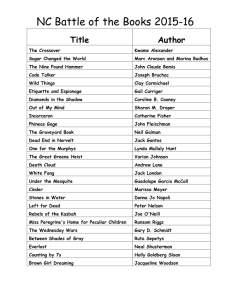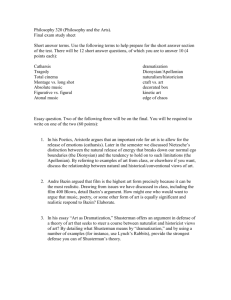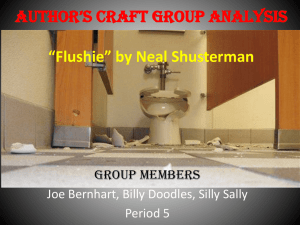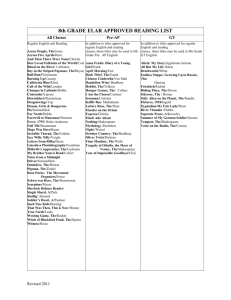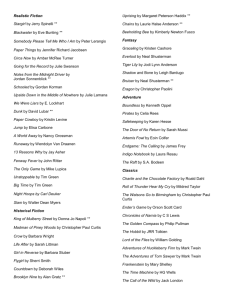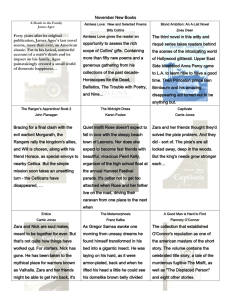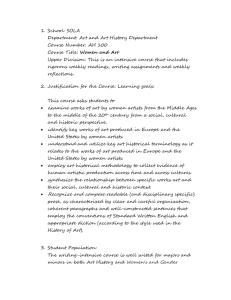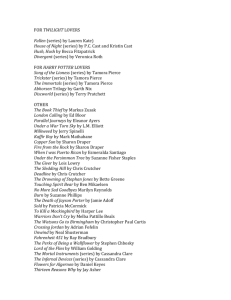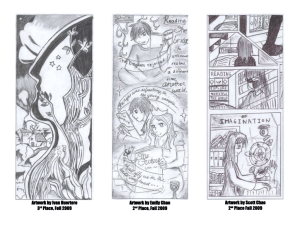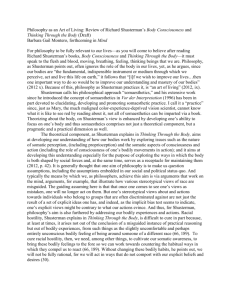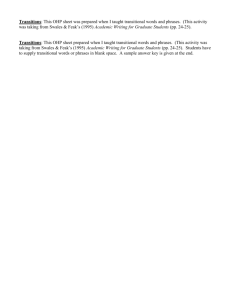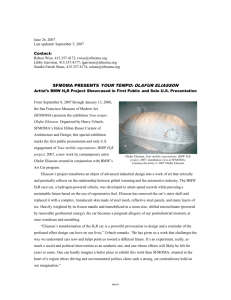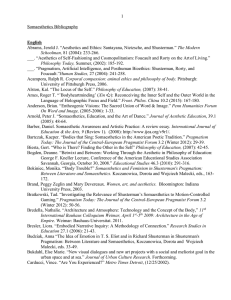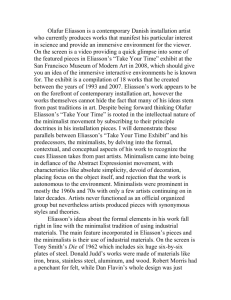technology on contemporary art projects with a social and meliorist
advertisement
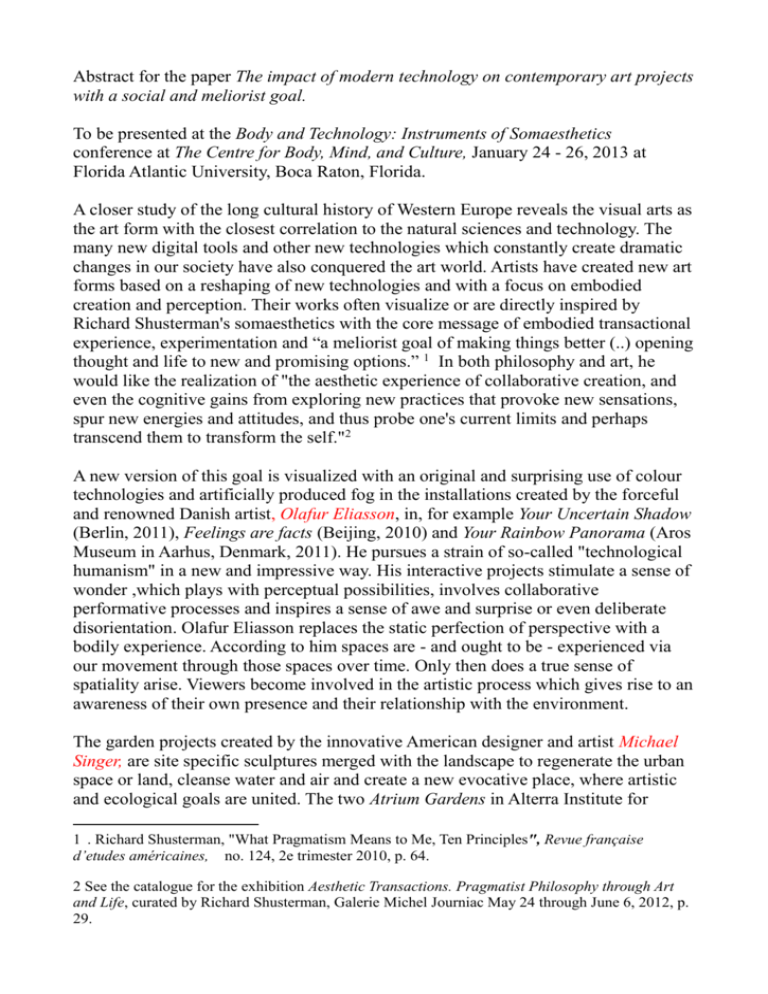
Abstract for the paper The impact of modern technology on contemporary art projects with a social and meliorist goal. To be presented at the Body and Technology: Instruments of Somaesthetics conference at The Centre for Body, Mind, and Culture, January 24 - 26, 2013 at Florida Atlantic University, Boca Raton, Florida. A closer study of the long cultural history of Western Europe reveals the visual arts as the art form with the closest correlation to the natural sciences and technology. The many new digital tools and other new technologies which constantly create dramatic changes in our society have also conquered the art world. Artists have created new art forms based on a reshaping of new technologies and with a focus on embodied creation and perception. Their works often visualize or are directly inspired by Richard Shusterman's somaesthetics with the core message of embodied transactional experience, experimentation and “a meliorist goal of making things better (..) opening thought and life to new and promising options.” 1 In both philosophy and art, he would like the realization of "the aesthetic experience of collaborative creation, and even the cognitive gains from exploring new practices that provoke new sensations, spur new energies and attitudes, and thus probe one's current limits and perhaps transcend them to transform the self."2 A new version of this goal is visualized with an original and surprising use of colour technologies and artificially produced fog in the installations created by the forceful and renowned Danish artist, Olafur Eliasson, in, for example Your Uncertain Shadow (Berlin, 2011), Feelings are facts (Beijing, 2010) and Your Rainbow Panorama (Aros Museum in Aarhus, Denmark, 2011). He pursues a strain of so-called "technological humanism" in a new and impressive way. His interactive projects stimulate a sense of wonder ,which plays with perceptual possibilities, involves collaborative performative processes and inspires a sense of awe and surprise or even deliberate disorientation. Olafur Eliasson replaces the static perfection of perspective with a bodily experience. According to him spaces are - and ought to be - experienced via our movement through those spaces over time. Only then does a true sense of spatiality arise. Viewers become involved in the artistic process which gives rise to an awareness of their own presence and their relationship with the environment. The garden projects created by the innovative American designer and artist Michael Singer, are site specific sculptures merged with the landscape to regenerate the urban space or land, cleanse water and air and create a new evocative place, where artistic and ecological goals are united. The two Atrium Gardens in Alterra Institute for 1 . Richard Shusterman, "What Pragmatism Means to Me, Ten Principles", Revue française d’etudes américaines, no. 124, 2e trimester 2010, p. 64. 2 See the catalogue for the exhibition Aesthetic Transactions. Pragmatist Philosophy through Art and Life, curated by Richard Shusterman, Galerie Michel Journiac May 24 through June 6, 2012, p. 29. Environmental Research (Netherlands, 1999) are called the "twin green lungs and kidneys" of the building, because both the plants and the watering system, based on new technology, produce an optimal inner climate - without air-conditioning and create a poetic atmosphere. The garden in Eco Tarium (New England Science Centre) is another example of Singer's combination of artistic and climate-improving objectives. Singer believes that most of his gardens are only completed when visitors have walked through them and experienced them with the entire body and all its senses. He draws on unprecedented priorities that can inspire both artists and architects to discover unexpected artistic models for urban and ecological renewal and enhance the quality of life. This can be described as another aspect of somaesthetics. Superflex, a Danish artists' group founded in 1993 by Jakob Fenger, Rasmus Nielsen and Bjørnstjerne Christiansen, has created new forms of installations in the international art world. This group describes the works they make as "tools”. They often invite people to participate in structures of production, which alter the conditions of the social life and economy in which the projects operate. An example is the video project Karlskrona2, which will initially be an exact replica of the city but as the virtual citizens meet and interact, things will change, buildings will redefine their functions, social hierarchies will alter, laws will be reconstituted and renewed. The virtual Karlskrona will be visible to the real city via a large-scale video projection in the main square. Here citizens can gather in real space to follow the activities of their avatars and consider the differences between Karlskrona and Karlskrona2. The project is designed as a research experiment, using the Internet as a local network rather than a global communication tool. Somaesthetics could be used as the theoretical framework for this interactive media art. Like Shusterman, the renowned Chinese artist is convinced that all art is created and perceived through the body. Gongkai knows that body consciousness plays an important role in traditional and Chinese painting. That is also the case with the impressive video installation Snow Melting into Lotus from the Venice Biennale 2011. It is a long, moving passage in which the temperature never rises above 10º C and which transports you into a magical space. In this work Pan Gongkai juxtaposes the traditional technique of ink painting with cut-out western characters cascading along the ground. Pan Gongkai has also participated in Shusterman's abovementioned exhibition in Paris. One key focus in Shusterman's discussions with Pan Gonkai "concerned the relationship between art and life, including the pragmatist idea of the ethical art of living".3 Shusterman’s somaesthetics appeals to, and provides the opportunity for new interpretations of artworks based on new technologies and provides the artists with new ideas and inspiration. 3. Aesthetic Transactions, op. cit, p. 3 Bibliography: The catalogue for the Venice Biennale 2011, Olafur Eliasson, Colour Memory and other informal shadows, Milano, 2007, Else Marie Bukdahl, The Reenchantment of Nature and Urban space. Michael Singer Projects in Art, Design and Environmental Regeneration, 2011. Superflex, Tools, ed. B. Steiner, Cologne, 2000, D. phil. Else Marie Bukdahl, Affiliated Professor at the Department for Architecture and for Art and Technology at the University of Aalborg, Denmark, member of The Danish and Norwegian Academy of Sciences and Letters.
